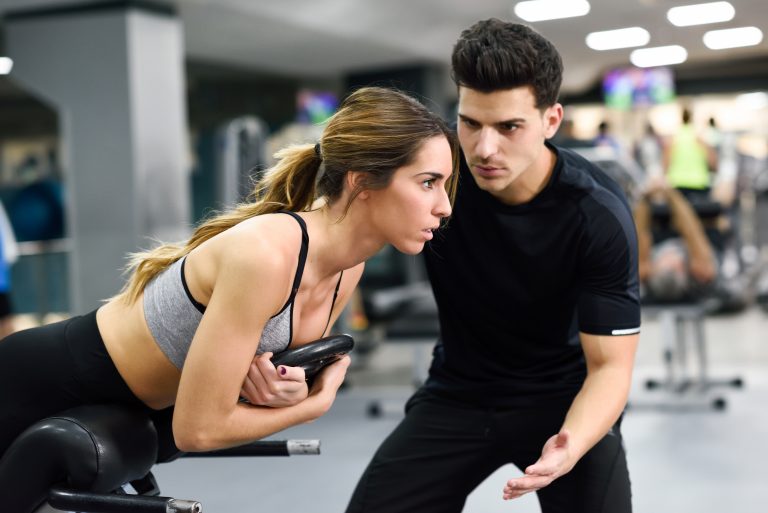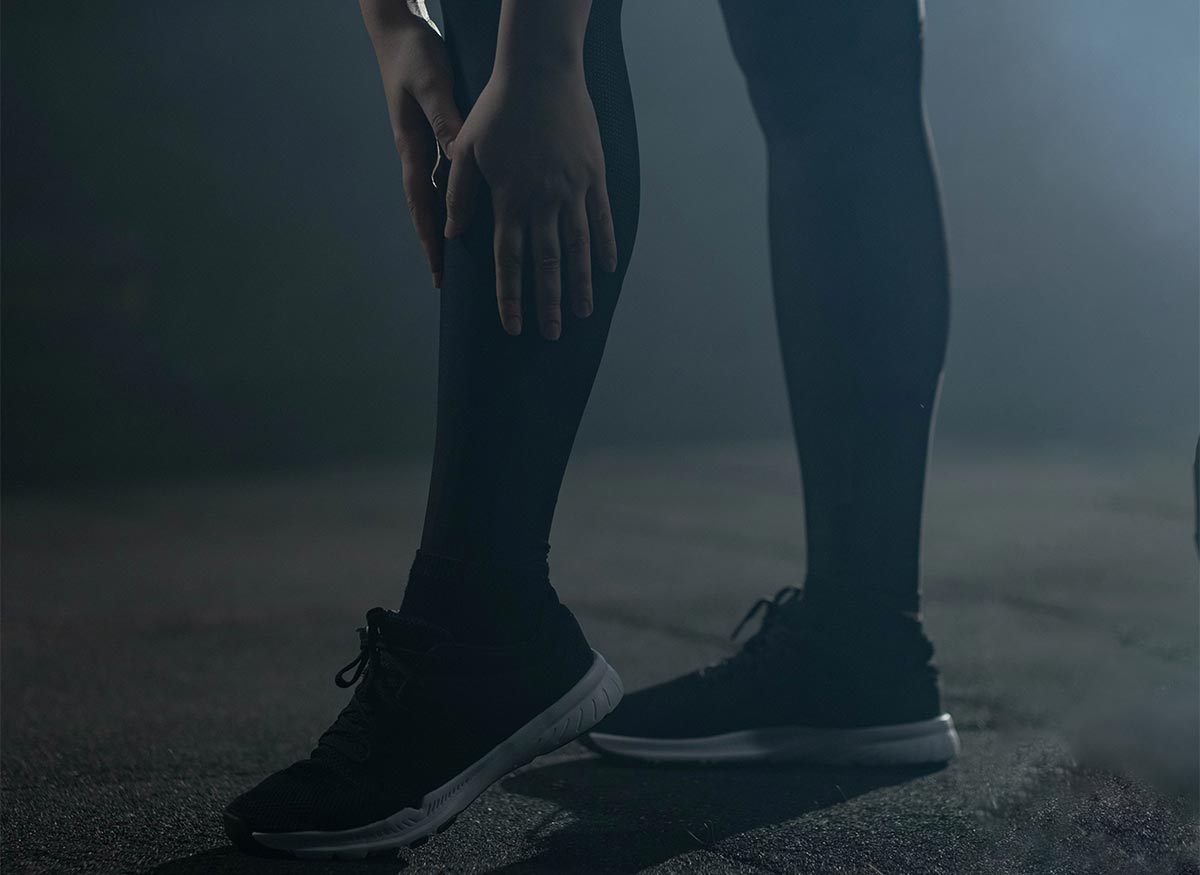In nearly every fitness facility, it stands—proud, silent, and seemingly trustworthy: the so-called back extension machine, also known as the hyperextension bench. One lies down at a 45-degree angle, feet secured, arms crossed or heroically clutching a five-kilogram plate to the chest, and begins to jerk the upper body upwards. Sounds like a fantastic back exercise?
This form of functional training not only improves posture but also protects the sensitive structures in the lumbar region from compensatory strain.
This form of functional training not only improves posture but also protects the sensitive structures in the lumbar region from compensatory strain.This form of functional training not only improves posture but also protects the sensitive structures in the lumbar region from compensatory strain.
Alas, no—it brings tears to the eyes of every physiotherapist, like myself, who has to deal with the consequences of tortured (!) lower backs. For while the device visually symbolizes the spine, functionally it often represents an assault on it. Current studies from 2023 and 2024 increasingly show that this form of training is biomechanically not only ineffective but potentially harmful—especially for those already struggling with postural issues or shortened musculature in the lower back region. It's akin to trying to fix a wobbly table by repeatedly kicking its already stressed legs—more likely to exacerbate the problem than solve it.
Misunderstood Anatomy: The Pitfalls of Isolated Strengthening
Many individuals train on this "hyperextension" machine under the assumption that they are specifically strengthening a weak back musculature. In reality, however, the situation is more complex—and above all: often the opposite. The muscles of the lower back, particularly the erector spinae, are not underdeveloped in many people, but rather chronically tense and shortened. This is precisely what current research from the German Sport University Cologne, which published a large cohort study in 2024, confirms. This study highlights the prevalence of hypertonicity and reduced flexibility in the lumbar extensor muscles among individuals experiencing non-specific low back pain.
Instead of strengthening, this area, the musculature of the lumbar spine (LWS), would benefit much more from mobilization and stretching to release existing tension and restore natural movement. Those who additionally subject it to tension through isolated training on the hyperextension machine, in the worst case, promote misalignments, muscular imbalances, and even disc problems. The very structure that is supposed to be strengthened is therefore often not weak—it is simply overstressed. But by all means, continue with this nonsense; the resulting herniated disc might just grant you a few months of sick leave! It's a bit like trying to calm a stressed-out guard dog by shouting louder—counterproductive and likely to escalate the tension.
When the Back Bends, It's Usually Up Top—Not Down Below
The often-cited "round back," medically known as kyphosis, is rarely a problem that originates in the lower back. Rather, this postural fault almost always begins in the thoracic spine—the middle part of the back—and can extend up to the cervical spine. It is precisely there that a lack of mobility and muscular straightening is often evident, as demonstrated by recent MRI-based posture analyses from 2023. These studies underscore the crucial role of thoracic spine mobility and the strength of the upper back extensors in maintaining proper spinal alignment.
Therefore, anyone who believes they can combat a round back with a back extension "hyperextension" machine is essentially training in the wrong place. A more effective approach would be to promote straightening from the thoracic spine—for example, through exercises with a Exercise ball, where the movement is initiated from the upper back.
This form of functional training not only improves posture but also protects the sensitive structures in the lumbar region from compensatory strain. It's like trying to fix a crooked antenna by adjusting its base—the problem lies higher up. Focusing solely on the lower back in such cases is not only inefficient but can also lead to further imbalances and discomfort. The key is to address the root of the problem, which typically resides in the upper and middle back.
The Ego and Extra Weight: An Exercise in Vanity?
Another misguided trend is the practice of pressing additional weight against the chest during hyperextension exercises. A five-kilogram plate may sound harmless, but it massively increases the pressure on the lumbar spine. What is often forgotten is that this area is already under significant static load—whether sitting in the office, driving a car, or lounging on the couch. The added weight shifts the leverage point forward, which can lead to excessive compression of the intervertebral discs.
So, anyone who believes they are doing their back a favor by adding more resistance is potentially catapulting it directly into the next episode of pain. Furthermore, there is a psychological aspect to consider: training on the back extension machine looks spectacular—and suggests that one is working hard. In reality, however, one is often working against their body, not with it. It becomes an exercise driven by ego rather than anatomical understanding. It's like trying to tighten a screw with a hammer—forceful but ultimately damaging.
Functional back training, on the other hand, emphasizes controlled movement and proper form over sheer weight. The goal should be to strengthen the muscles that support the spine in a balanced and functional way, not to simply lift more weight in an isolated and potentially harmful movement. Here are some exercises with the exercise ball that strengthen the back:
• Back Extension on Exercise Ball
Functional Back Training: Beyond Isolated Muscle Work
The future of back training lies not in rigid machines but in dynamic, holistic movement patterns. Exercises that engage multiple muscle groups simultaneously promote coordination and the interplay between the core, hips, and shoulders. These include, for example, stabilizing exercises in a quadruped position, controlled extensions over a Exercise ball, or targeted mobilization movements focusing on the thoracic spine.
These forms of training not only consider functional anatomy but also individual movement restrictions. And above all: they prevent the lower back from further tightening due to incorrect stimuli. Research is clearly moving towards prevention through movement competence—not through isolated strength stimuli on questionable devices. It's about training movements, not just muscles. Think of it like learning a musical instrument—you don't just practice individual notes in isolation; you learn to play melodies and harmonies. Similarly, effective back training involves integrating different muscle groups to create fluid and controlled movements that mimic real-life activities. This approach not only strengthens the back but also improves overall body mechanics and reduces the risk of injury. The focus shifts from simply building muscle mass to enhancing functional strength and resilience.
Hyperextension Out—Posture In: A Healthier Approach
Anyone who truly wants to do their back a favor should preferably avoid the hyperextension machine in the future. Modern exercise science increasingly demonstrates that this exercise, in most cases, does not provide a functional improvement—but rather exacerbates existing imbalances. Instead, mobility exercises, posture training, and a conscious approach to everyday stresses are the keys to a healthy back. So, get off the incline, get down to the floor—and engage in movements that truly benefit the back: upright, mobilized, and with a sense of anatomy rather than showmanship.
Because in the end, it's not about how much weight you can lift, but how well you can move—throughout your life. A strong back is important, but a functionally strong and mobile back is invaluable. And that is rarely built on a 45-degree bench. It requires a more nuanced and holistic approach that prioritizes movement quality over quantity and addresses the underlying causes of back pain rather than just treating the symptoms. Investing in proper movement patterns and postural awareness will yield far greater long-term benefits than relying on potentially harmful exercises.












